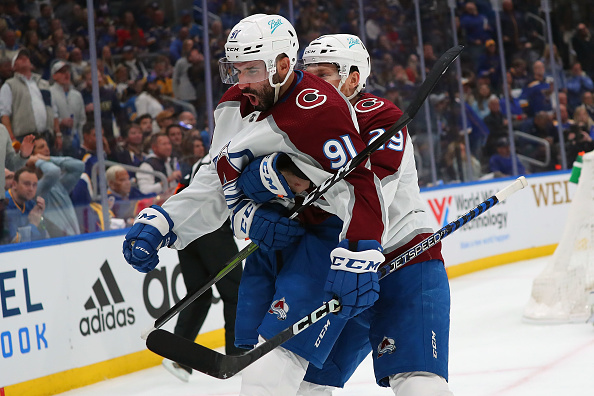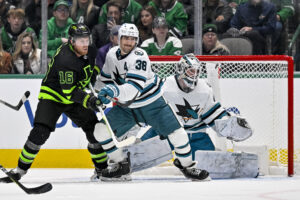Player development seems to always result in more questions than answers. How likely is it for a top pick to pan out? What makes a player a “steal”? Last Word On Hockey will be starting a new series on how to properly develop prospects from all different spots throughout the draft. This week’s piece involves top-10 picks and how they were used early in their careers.
Player Development of Top-10 Picks
In the span of 2005 through 2015, there were 40 total selections made between fourth overall and tenth overall on forwards playing in North America. Looking at all 40 forwards, they were split into eight categories. Those eight are “Deemed NHL-ready and brought in immediately,” “Near NHL-ready and brought in immediately,” “Rushed slightly,” “Rushed,” “Forced,” “A little patience,” “Patience,” and “Too much patience/never panned out.”
Of those categories, five of them included players who were brought in as soon as possible, or before the player was ready. The other three categories included players who were given additional time despite possibly being deemed ready sooner.
Immediate Call-Ups
Looking at the first five categories, which included players brought in quickly, there were 24 total players. Of those players, nine were brought in immediately following the draft. Those players are Sam Gagner, Sean Couturier, Evander Kane, Josh Bailey, Jeff Skinner, Sean Monahan, Phil Kessel, Mikkel Boedker, and Alex Burmistrov.
In total, these players average 0.852 wins above replacement (WAR) per season. What that means is, per season, these players average just shy of 1.0 WAR. These players also averaged 17:02 time on ice per game in their careers altogether, while recording an average of 0.586 points per game (48 points in 82 games). That’s about what you’d expect from an average second-line forward, generally speaking.
Early Call-Ups
The remaining 24 forwards who were brought in quickly, but not immediately, included 15 players. Those players were James Sheppard, Peter Mueller, Benoit Pouliot, Ryan Johansen, Gilbert Brule, Nick Ritchie, Brett Connolly, Nino Niederreiter, Colin Wilson, Bo Horvat, Pavel Zacha, Jake Virtanen, Devin Setoguchi, Jack Skille, and Kyle Okposo. In total, these players averaged 0.517 WAR per season, which is roughly 0.3 less than the players brought in immediately.
These players also averaged 14:28 time on ice per game (2:44 less than players brought in immediately). With that, they averaged 0.444 points per game (0.142 less). That difference in points per game seemingly looks marginal. However, while the players brought in immediately project to record 48 points a season with their per-game rates, these players would produce between 36 and 37 points, an 11 or 12-point difference per year. That’s closer to the average third line forwards production.
Teams Having Patience With Player Development
In total, there were 15 players who were given patience in three different ways. Those players were Timo Meier, Nazem Kadri and Mark Scheifele in the “a little patience” category. Nikolaj Ehlers, Mitch Marner, Sam Bennett, Jakub Voracek, Derick Brassard, Logan Couture, Brayden Schenn, and Zach Hamill were in the “patience” category. Finally, Ryan Strome, Cody Hodgson, Michael Dal Colle, and Scott Glennie were in the “too much patience” category.
A Little Patience
Meier, Kadri and Scheifele all averaged 1.494 WAR per season (0.642 WAR above players brought in immediately, 0.977 WAR above players brought in quickly). Additionally, they averaged 17:51 time on ice per game (49 seconds more than players brought in immediately) and 0.753 points per game (61 to 62 points in an 82-game season). That’s a considerably higher mark than the previous two categories. It’s roughly what a team would expect from a low first-line forward or high-end second-line forward.
Patience
Ehlers, Marner, Bennett, Voracek, Brassard, Couture, Schenn, and Hamill, meanwhile, average 1.106 WAR per season (roughly 0.3 less than players given “a little patience”). They also average 16:18 time on ice per game (1:33 less than “a little patience”) and 0.648 points per game (0.105 less than “a little patience”). That equals 53 points in an 82–game season, on average, which is eight to nine points less per season. Despite that, both “a little patience” and “patience” have turned out better than players immediately brought into the NHL. Similar to the “a little patience” players, these players would be low-end first-line forwards and high-end second liners. However, they lean more towards the second line.
Too Much Patience
Strome, Hodgson, Dal Colle and Glennie all were over-saturated in development. In fact, Glennie never played more than 15 games in a single NHL season. This is the threshold that a player needed to be deemed as making his first official year in the NHL. Regardless, these players combined to average 0.212 WAR per season. That is 0.232 less than the next closest average (players brought in quickly). They also averaged 13:10 time on ice per game. That’s 1:18 less than the next closest average career ice times (players brought in quickly). Their points per game rates were at an average of 0.298 (24 to 25 points in an 82-game season). That is 11 to 12 points less per season than the next closest average. These numbers are what you’d expect from a below-average third-line forward, or above-average fourth-line forward.
What It All Means
Giving players some patience makes sense just on the surface. In the case of some of those players given patience, they were on teams that already had a fairly established roster. That made it harder for a prospect to make the team with a decent role. Waiting for said prospects to establish themselves above the rest in their developmental years gives an organization a better idea of what to expect. Thus, leading to a better idea of what role to give a player early on.
Digging deeper, if you give a player a little bit of extra time, it could pay dividends in the long run. The numbers show that teams actually found more success that way. Across draft picks taken between fourth and 10th overall, waiting for those picks to dominate constantly goes a long way. But what added to some of those players’ success is how they were used at the NHL level. Among other factors after making the NHL, but that’s a story for another day.
Advanced stats found on Evolving-Hockey (subscription required).
Main Photo:






